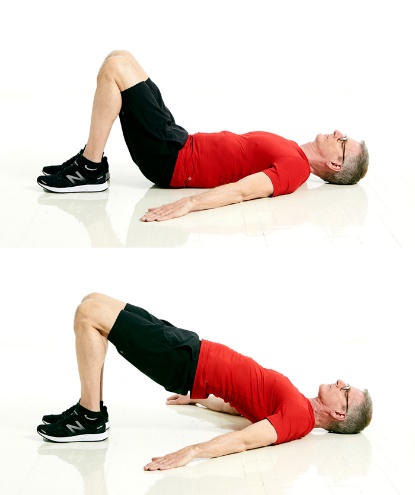When I was rebuilding my body from the ground up over the past five years, I used many different core strengthening techniques/workouts and movements to try to improve my health. I lived on a foam roller (more on that in a future post) and was forced to stretch daily for at least 30 minutes in order to stay out of constant pain in my low back. The health/fitness industry is very clear about the importance of the function of glutes and core/ab work in overall movement and function, and so I targeted those areas specifically. This story is really just the short version of how I stumbled upon the programming that would later become CNRP, which is central to my work (Cognitive Neuromuscular Re-Patterning™), but I think it is interesting, in so much, that it flies in the face of many understood concepts, while also plugging some unexplained holes.
Ever since I had been in the car accident, I had been unable to do any type of bridging or planking activity without pain. Sitting and standing was also an extremely painful transition. I assumed (like we all do) that my pain was due to injury, especially considering how serious my MRI’s were. Now please take this story with a grain of salt, as this is my personal account. So one day about 3 years ago, when I was feeling particularly pain-free and limber (a rare occurrence) I decided to revisit the bridge. (Understand the bridge is nothing more than hip extension).

Upon starting the bridge I immediately felt a constant nagging tension in the middle of my low back/lumbar area. The longer I bridged, the worse it felt. I held it for as long as I could (thinking I was strengthening my problematic area) and collapsed on the ground in significant pain. I then attempted to do planks, with similar results. For the next 20-30 minutes I worked to reset my back using a lacrosse ball (Shout out Dr. Starrett!) and various stretches. I was frustrated. I remember thinking to myself, “How can it be that this is still so painful and that I am still this injured”? It was honestly baffling and extremely frustrating. A large part of me wanted to believe that my pain was car accident related and there was no changing it. But when I started researching other people with back issues… I realized that my story was extremely common. I started thinking more in depth about the problem.
I spent the next couple weeks thinking about this session, and what was creating my pain in the bridge. I continued to research what might be the cause of this, with no real conclusion. I can’t tell you what exactly led me to my next step, because honestly I am not 100% sure of it myself. I knew the answer, according to many experts and just basic human anatomy had to do with glute function. It always puzzled me that I could never feel the muscle working like I could with say my biceps, or my hamstrings in other work outs, but I just assumed that was more due to characteristic of the glutes themselves. So my hypothesis ended up becoming the following. If I could not feel the glutes working in what should be a glute dominant movement, maybe they were not activating at all.

The next session I went to the bridge and instead of just concentrating on holding myself up, I became acutely aware of what muscles were being used in my bridge. To my amazement my hamstrings were rock solid, my low back was completely flexed, and my glutes were basically turned off. Try as I might, I could not get my glutes to turn on in any bridge, no matter what elevation I tried. More alarmingly, I realized I had no control over my glutes at all. The second I managed to finally get my low back out of my lift (very difficult) I found that my hamstrings would then load 100% of the bridge. I could hold the bridge for hours and never work the glutes the way I needed them to. I had managed to get myself out of the low back pain in the bridge, but I could not address the hamstring flexion, and I could not make the right muscle activate. I was incapable of seeing my experiment to the end, when in stepped my very beautiful and open-minded girlfriend. She would be the very first person to ever undergo CNRP programming, and this programming would completely change her historically poor low back health forever, as well as completely re-comp a large part of her body in the process.
Part 2 coming next week!

